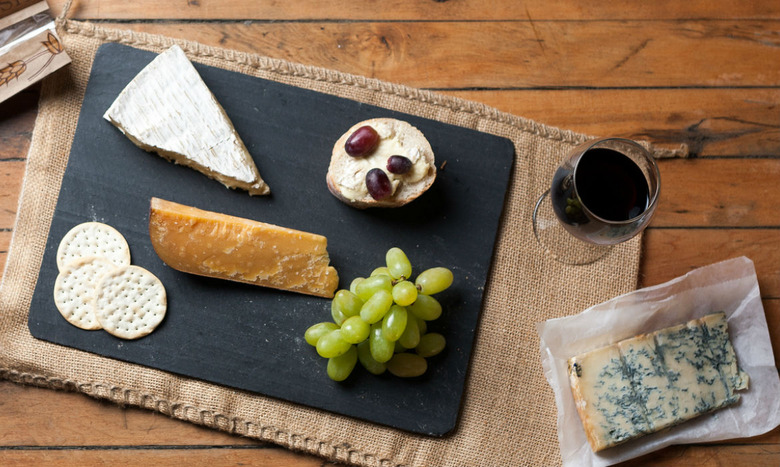How To Make The Ultimate Cheese Platter For Your Party
A cheese platter is a fancy and wonderful way to begin or end your dinner party. However, in our opinion, there's nothing better than hosting a dinner party which centers on the cheese platter.
Obviously, the best place to start when creating the ultimate cheese platter is with some really good quality cheese. Don't try to host your cheese party after one quick trip to your nearest supermarket. You need to give the centerpiece of your party some attention, and this is going to start at your local cheese shop.
Even if you've never been to the specialty cheese shop before, know nothing about cheese, and are terrified that you're going to be judged for your love of a cheese slice on your burger, trust us that this is where you need to go. Don't be afraid to ask silly questions, do try as much as you like, and let the staff members lead you on a tasty tour around the store's selection. Be honest with what you like, and they'll find a few cheeses to suit your taste. When you leave you'll have learned something new, and will be carrying the best cheese selection your fridge has ever seen.
Don't get too carried away in that cheese shop though. You don't want to have a cheese board crammed full with 20 different types of cheese. Too many cheeses will overwhelm your palate, as well as your table. Limit yourself to buying three, four, maximum five different ones. That's really all you need to have an interesting selection.
Make sure the four cheeses you choose are varied. Don't buy four different types of Cheddar just because that's your favorite. There's so many options in the cheese world, it's almost overwhelming to decide whether you should have a hard, a French, a soft, a goat, a blue, a sheep, an Italian, a truffled, an aged, a local... It'll be a much more beautiful and interesting cheese platter if you have a varied selection which includes just a few of those many options.
What you serve your cheese with is almost as important as the cheese itself. The accompaniments are going to make this into a meal, and bring out the best of each and every piece of cheese. Don't just slice some baguette and put a bunch of grapes on the table. A range of breads, toasts, crackers, grissini, and Scottish oatcakes will accompany your range of cheeses beautifully, providing the perfect amount of texture variation.
There are certain ingredients that go amazingly well with a particular cheese, drawing out a particular salty, soft, or sweet quality. Do a little bit of research if you want to be scientific about it, but we suggest always including a chutney, this Spanish membrillo, and a small bowl of clear honey. Honey and jam may not sound like what you want to eat with that salty Parmigiano-Reggiano, or that nutty, aged Spanish manchego, but try it, and you'll be surprised by how well these combinations work.
As much as we love feasting on cheese and bread, having some fresh, crunchy additions to a cheese platter are always welcome. Slice up some crisp apple or pear, chop some sticks of celery, and decorate your board with some deep red grapes. Not only will they add some color to your platter, they'll be perfect to counteract all that rich, creamy, saltiness that will otherwise slowly begin to overwhelm your palate.
When the time to serve your platter comes, make sure you take your cheeses out of the fridge at least an hour before you want to serve them. Allowing them to gradually come up to room temperature will open up their flavor and soften the texture. Remember to have a different knife for each cheese — after all this effort you don't want any inter-cheese contamination that will lead to them all tasting like a confused cheesy combination.
Now open that bottle of wine, lay your cheeses out with care, have a bowlful of briny olives and salty nuts on the side, and dig into your ultimate cheese platter.
